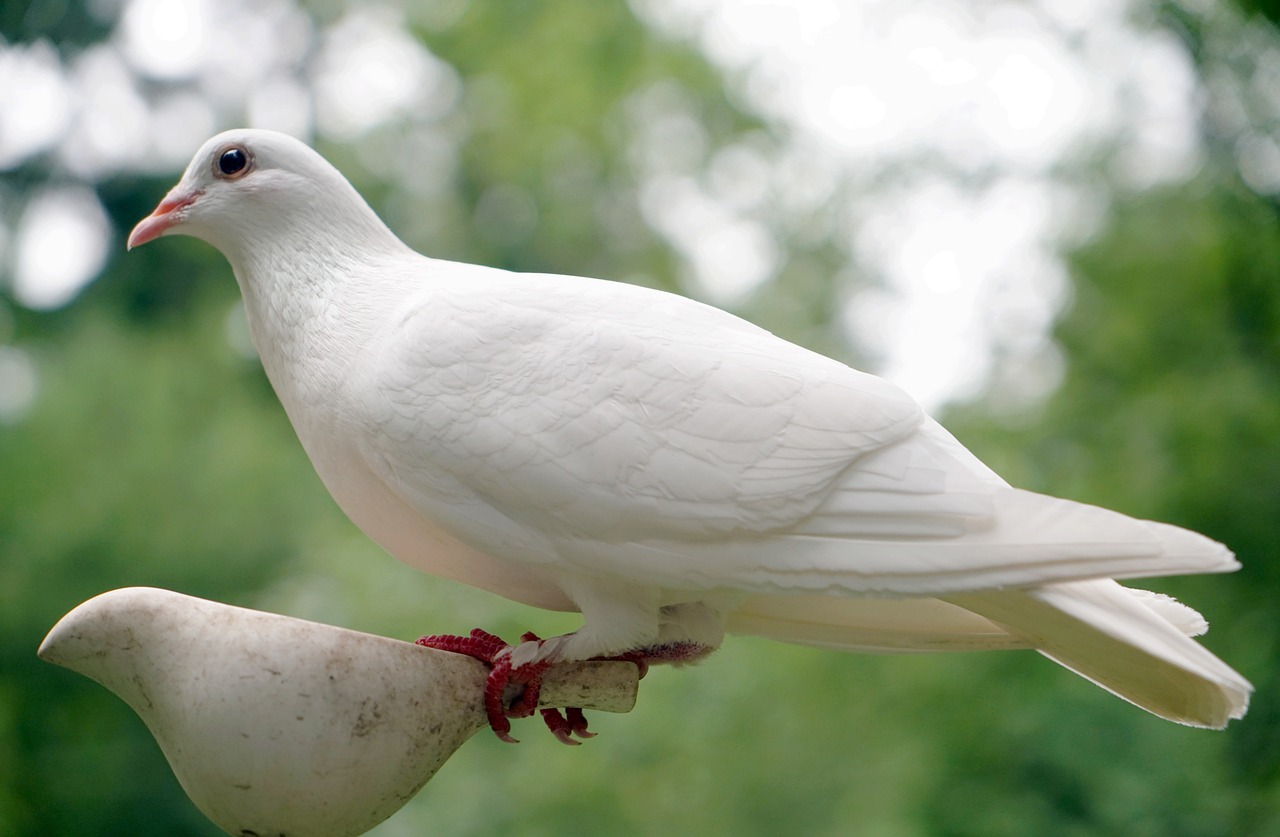Doves are a type of bird that belongs to the same family as pigeons, Columbidae. They are considered to be closely related, with some species being migratory and others being predominantly white. Doves are often used as symbols of love, peace, and hope in Christianity, and are associated with the Holy Spirit. They have been used in political and social contexts as a symbol of non-violent resistance and anti-war movements, and have also been used to carry messages throughout history. The lifespan of a dove can vary depending on the species, but on average, they live for about 5-10 years in.
Doves are symbols of the Holy Spirit, usually associated with peace and purity, and have distinct markings and patterns on their feathers. They are monogamous and will usually mate for life, although some species may form new pair bonds if their mate dies. Doves are known for their unique cooing sound, which is produced by a specialized vocal organ located in their esophagus called the syrinx. In addition to their symbolic and cultural significance, doves also play an important ecological role, being important pollinators and seed dispersers, helping to maintain the health and diversity of plant communities. Doves are a diverse bird with a rich cultural and ecological significance, often associated with love and peace.
In Genesis, the story of Noah’s Ark, doves play an important role. This is one of the most well-known Bible stories about doves. When the water stopped rising, Noah let a dove out of the ark to look for dry land. Noah knew it was safe to leave the ark when the dove came back with an olive branch (Genesis 8:8–12).
The Old Testament also says that doves are a sign of peace and cleanliness. In the book of Leviticus, people who can’t afford to sacrifice a more expensive animal are told to sacrifice a dove instead. People thought of the dove as a clean and kind animal, and sacrificing it was seen as a way to ask God for forgiveness and make peace with him (Leviticus 5:7).
Doves are described in the New Testament in relation to Jesus’ baptism. After Jesus was bathed in the River Jordan, the Holy Spirit came down on him in the form of a dove, and a voice from heaven said, “This is my Son, whom I love; with him, I am well pleased” (Matthew 3:16–17).
They are found all over the world, from the Arctic tundra to tropical rainforests, and inhabit a variety of habitats. They have a unique ability to navigate using the Earth’s magnetic field and have been associated with divinity and spirituality in some cultures. Doves are closely related to pigeons but have different physical and behavioral characteristics, such as being smaller and more slender and having a more streamlined body shape. They also have a distinctive head-bobbing behavior, which is thought to be a courtship display. Despite their symbolic associations, doves continue to inspire us in many different ways.

